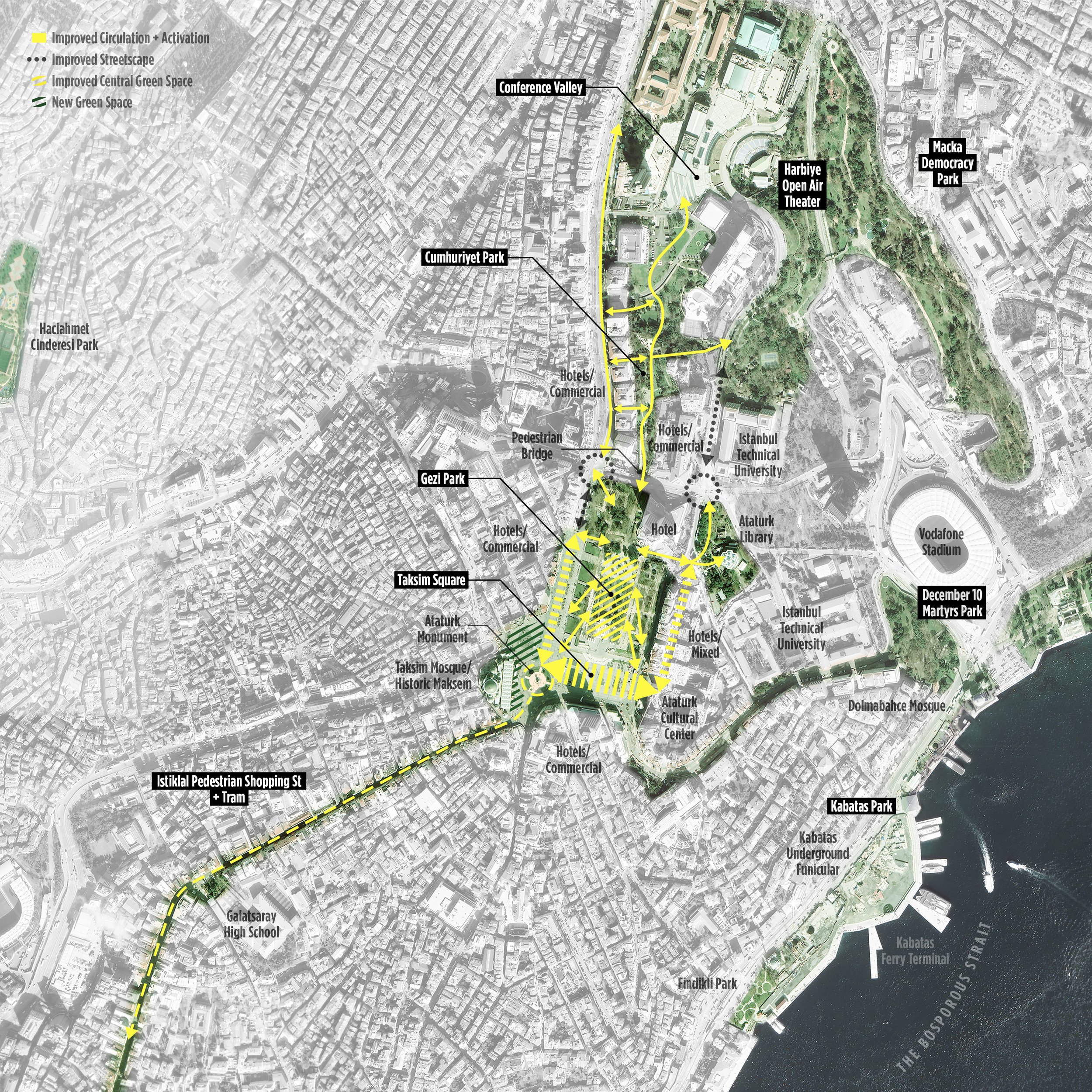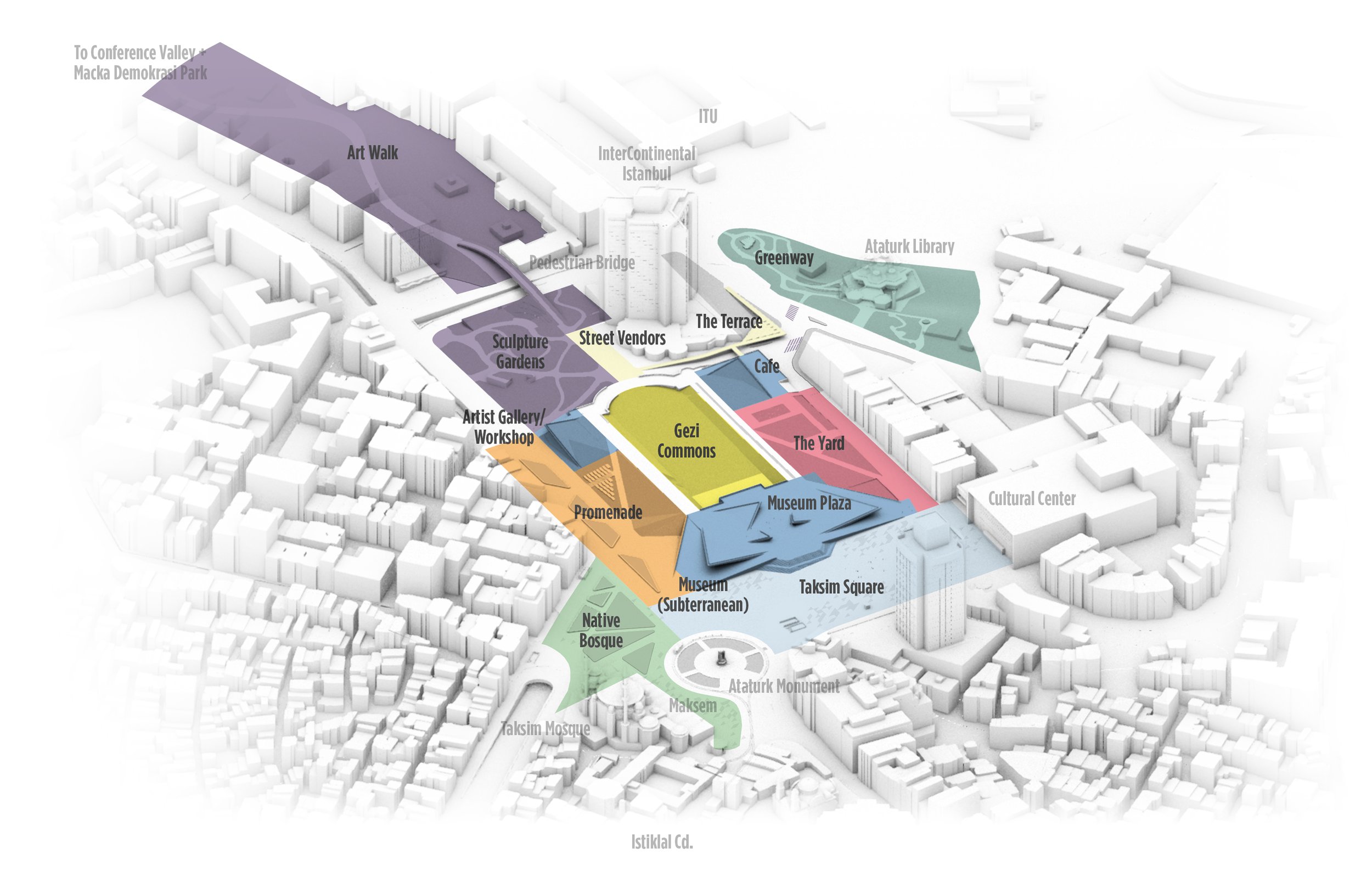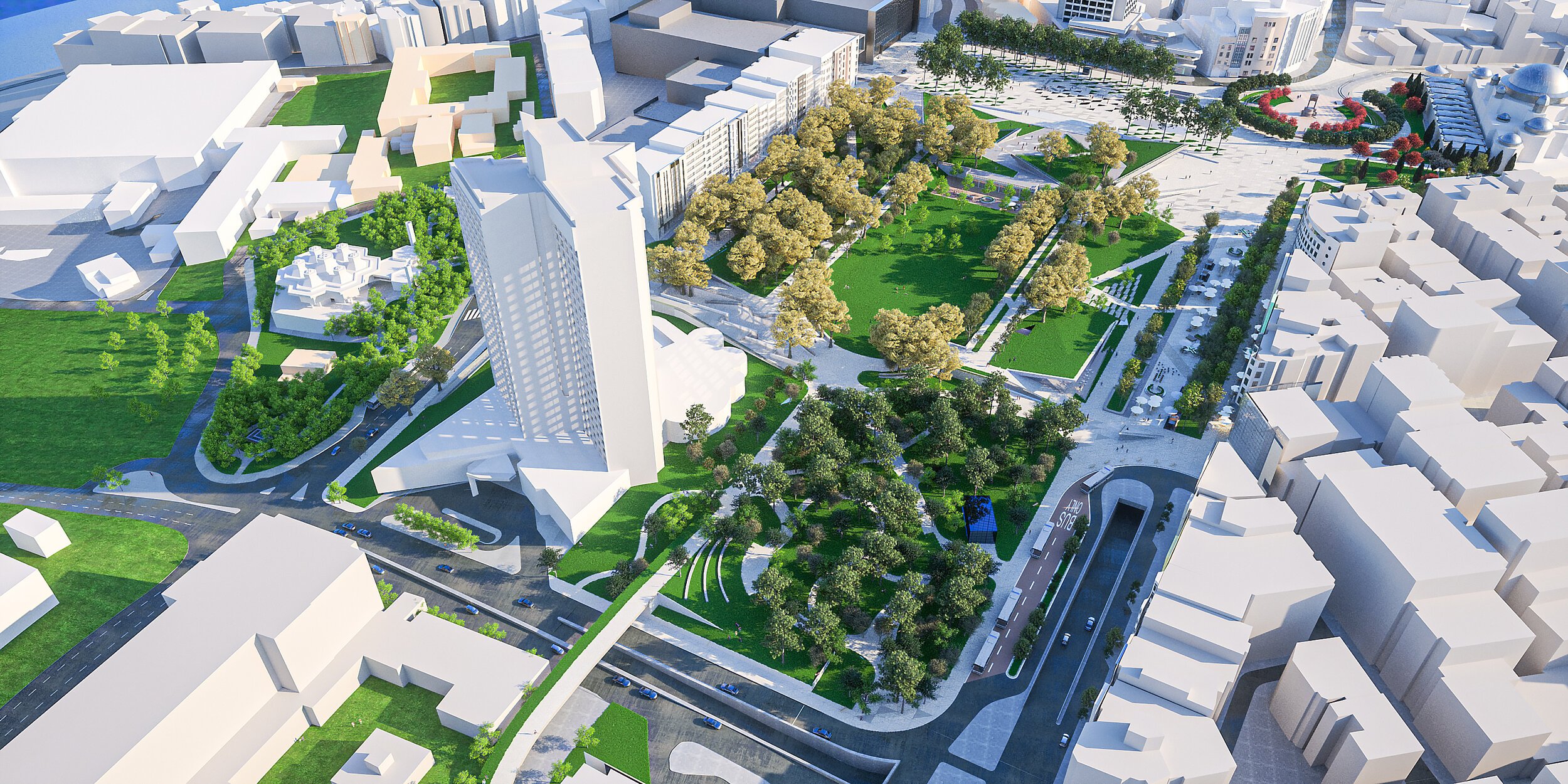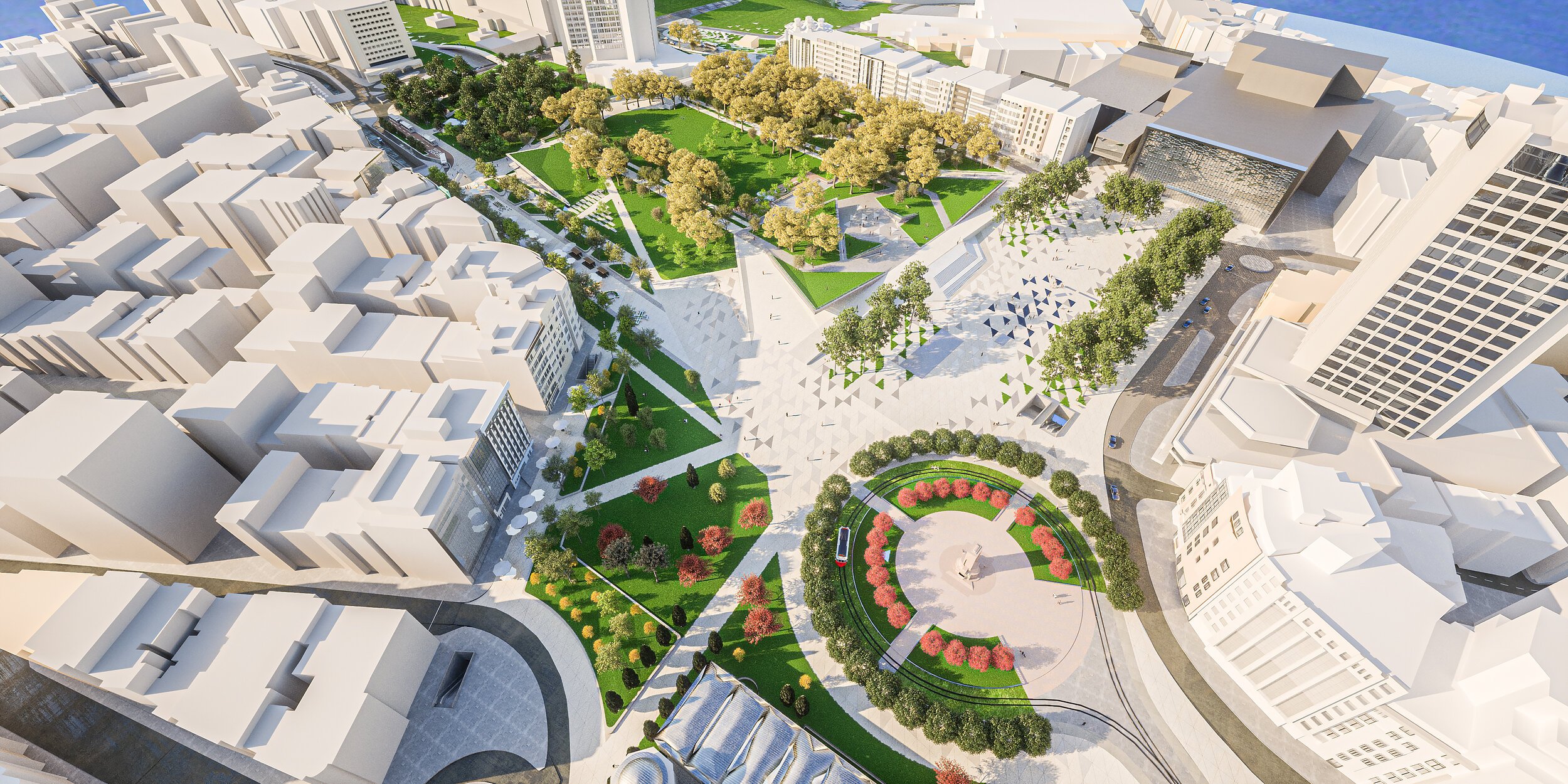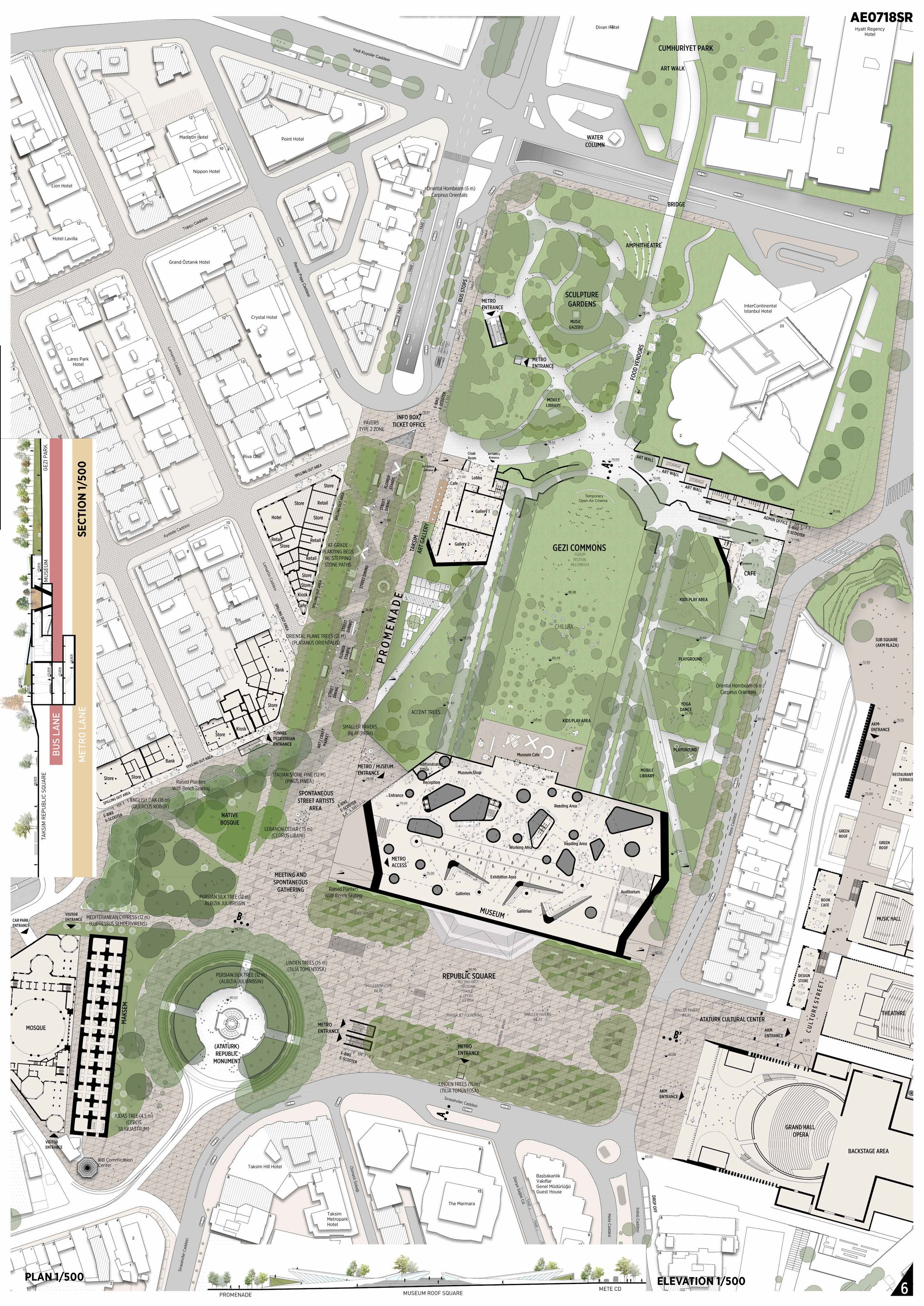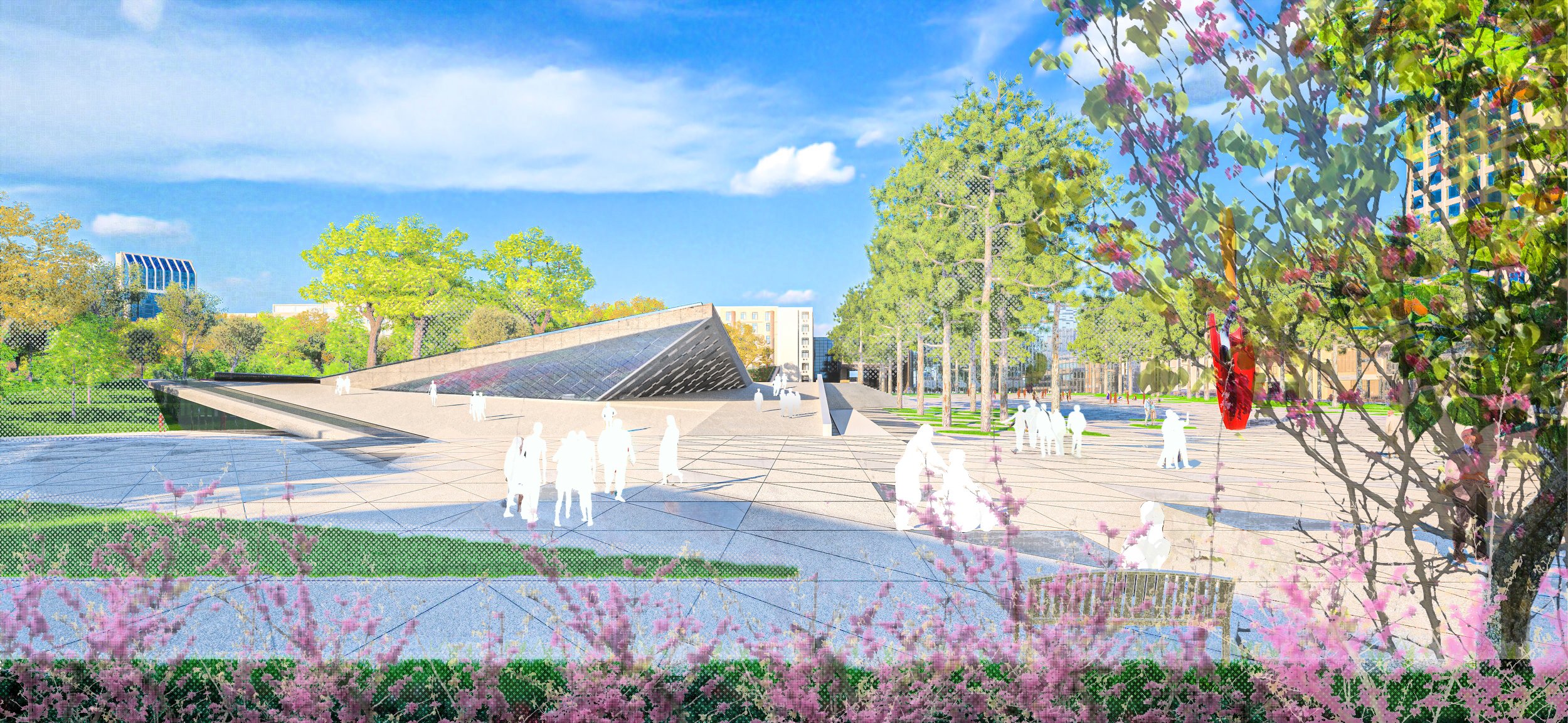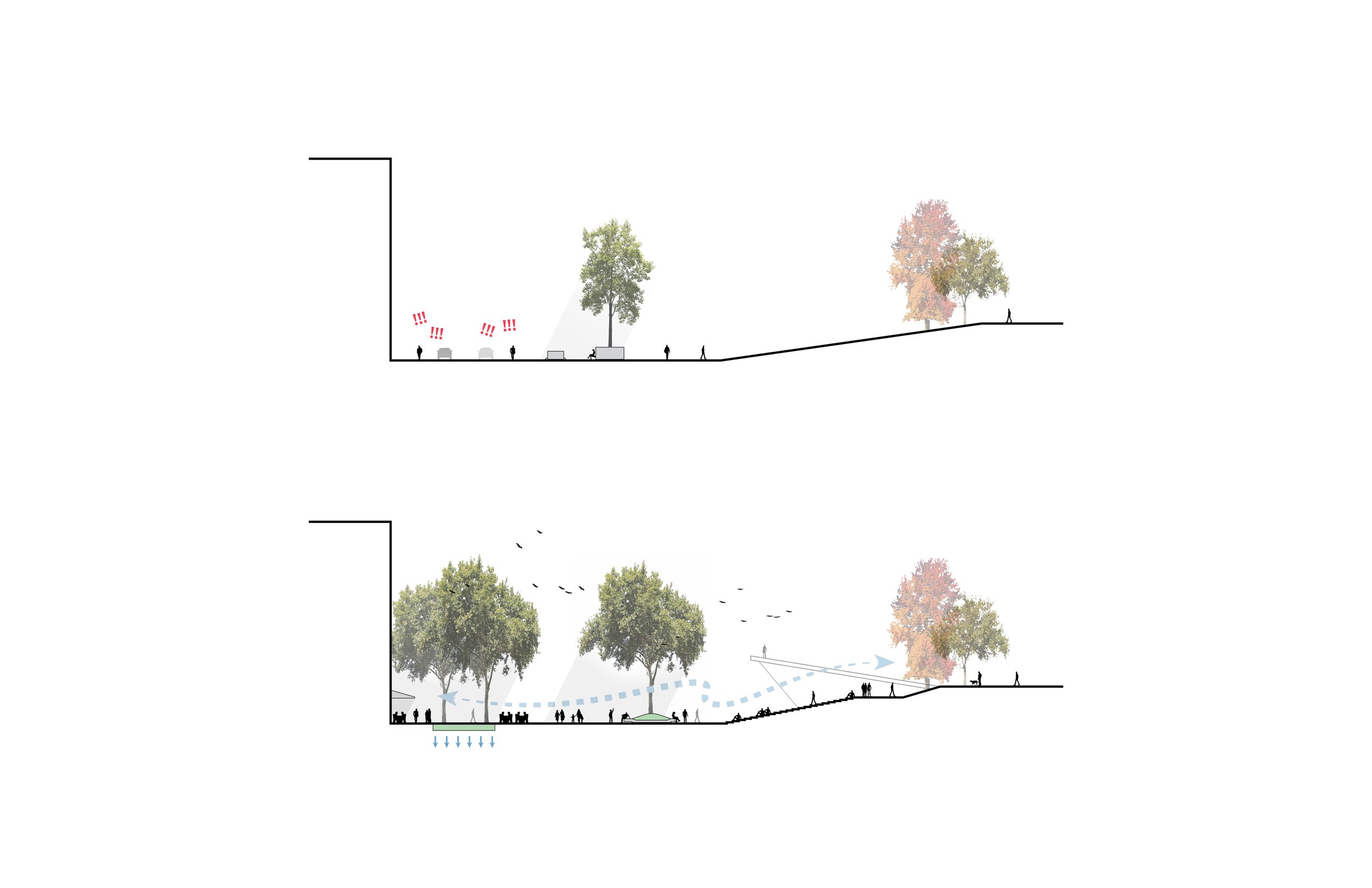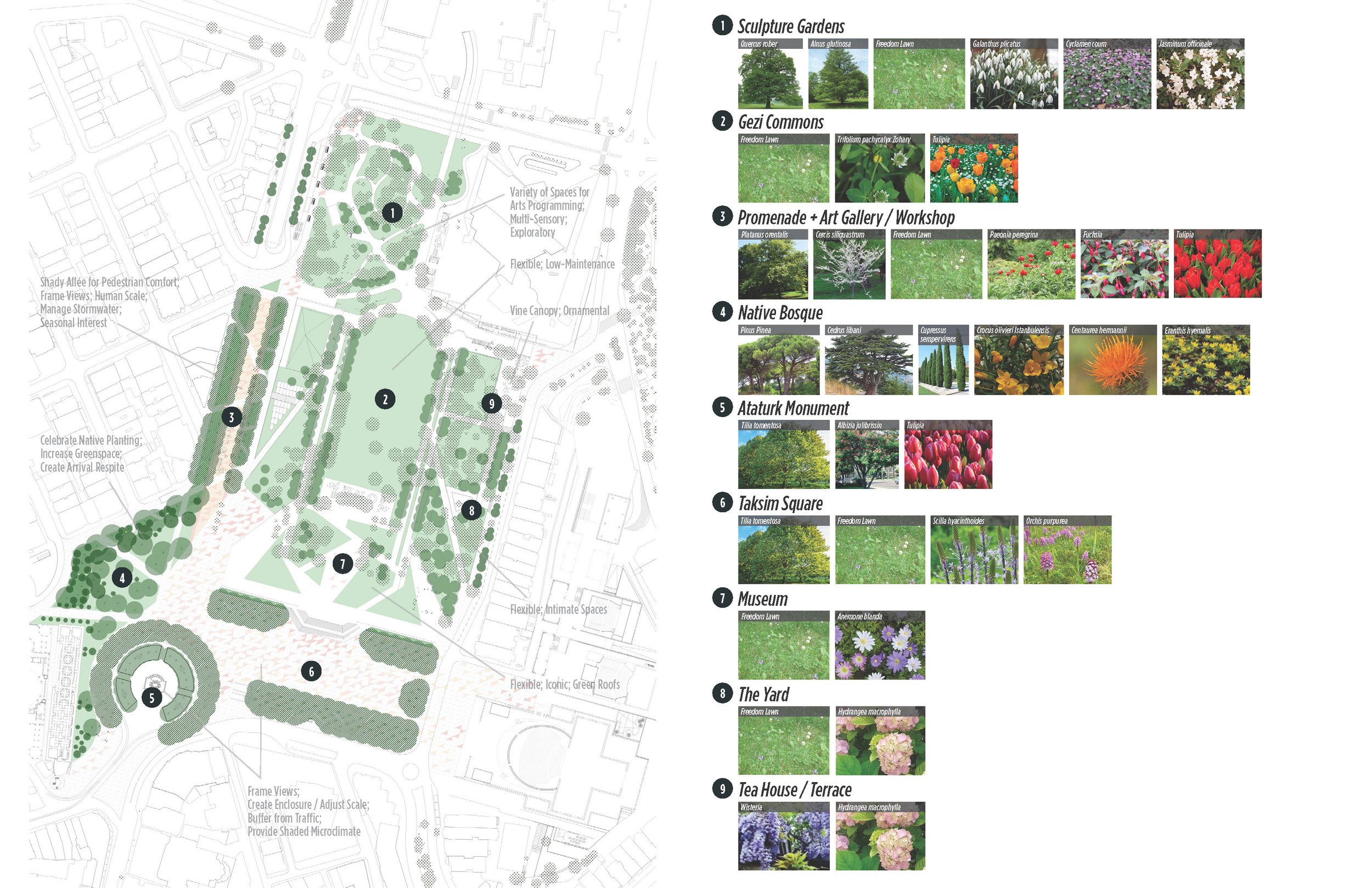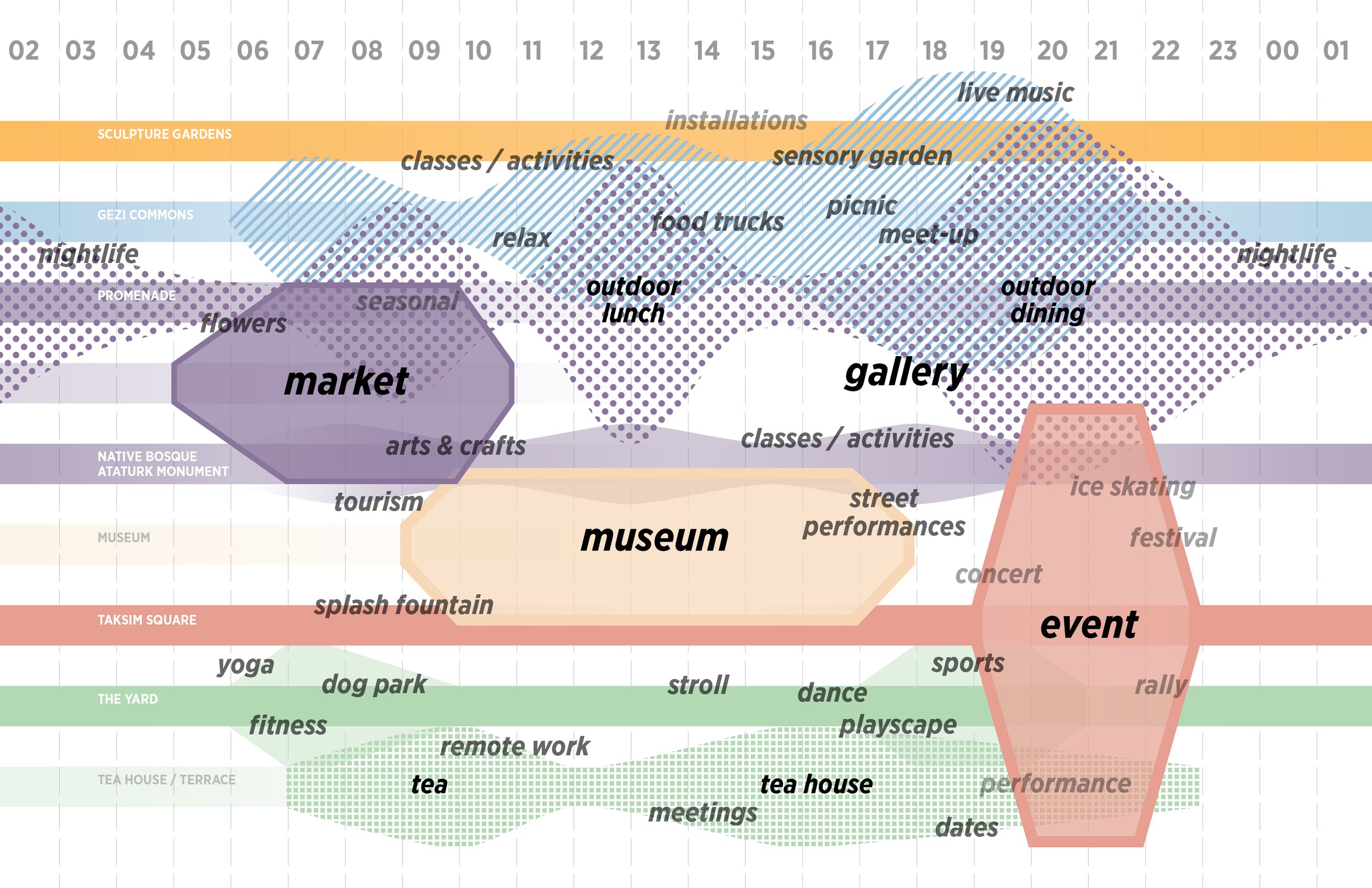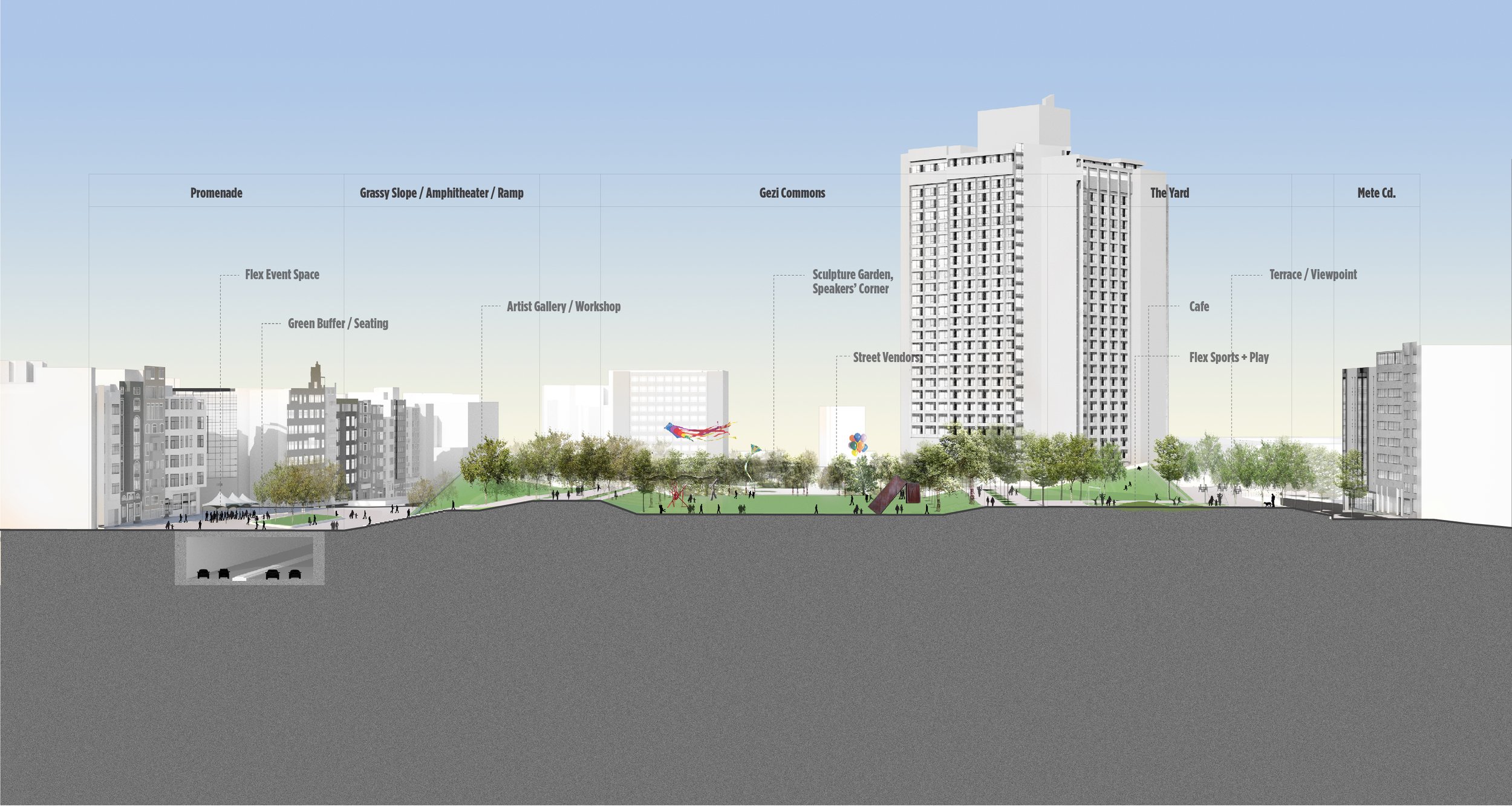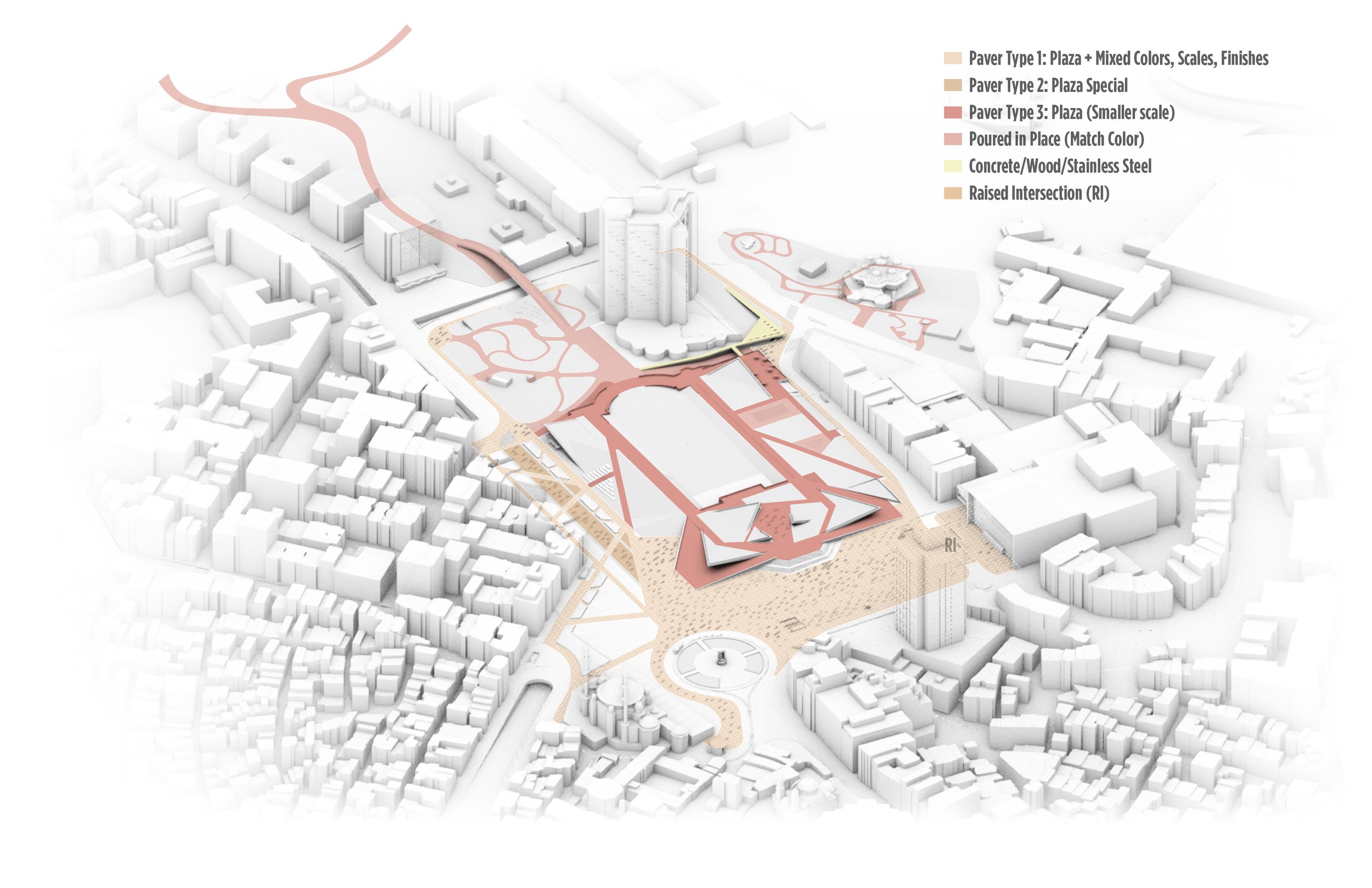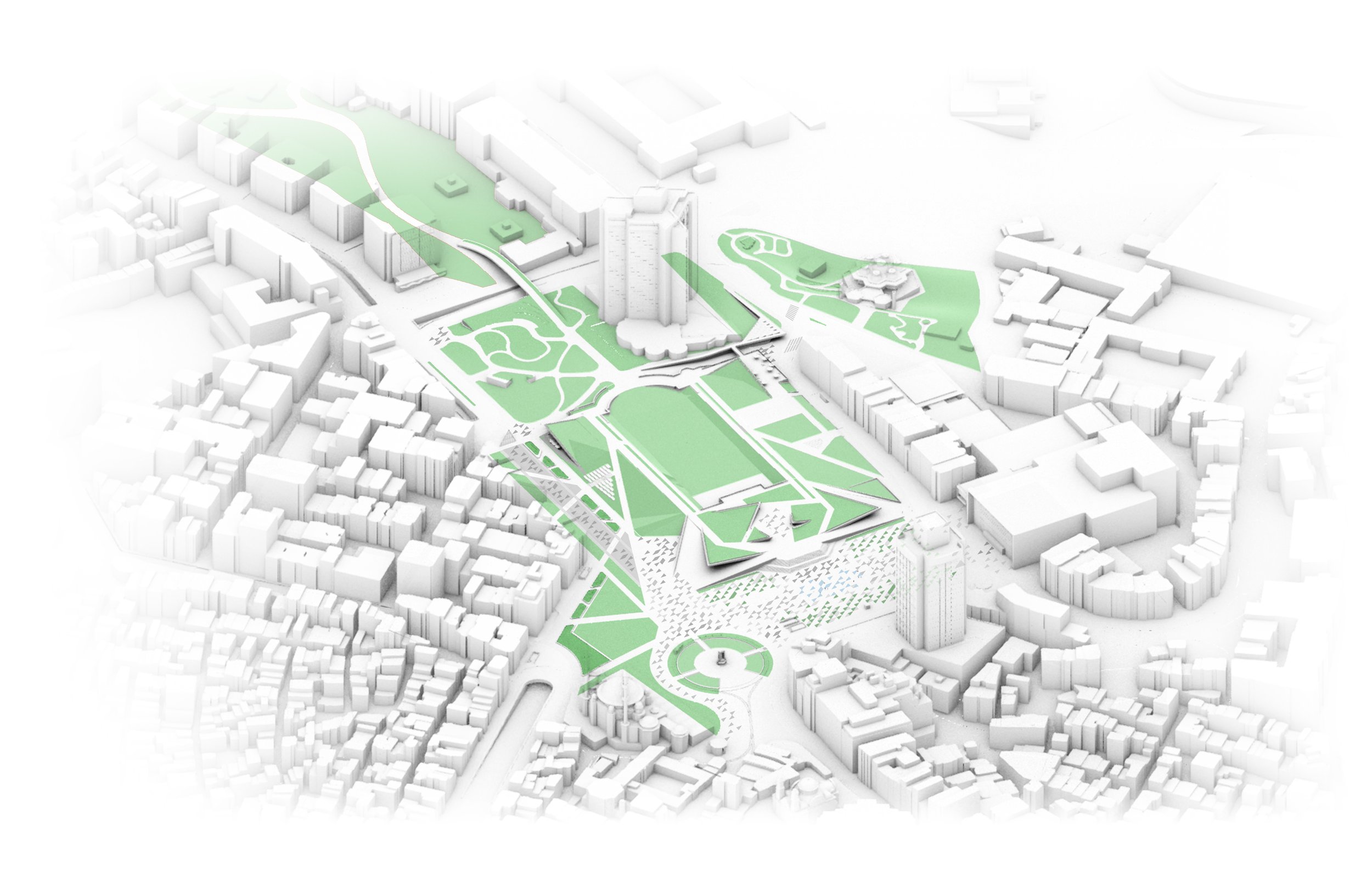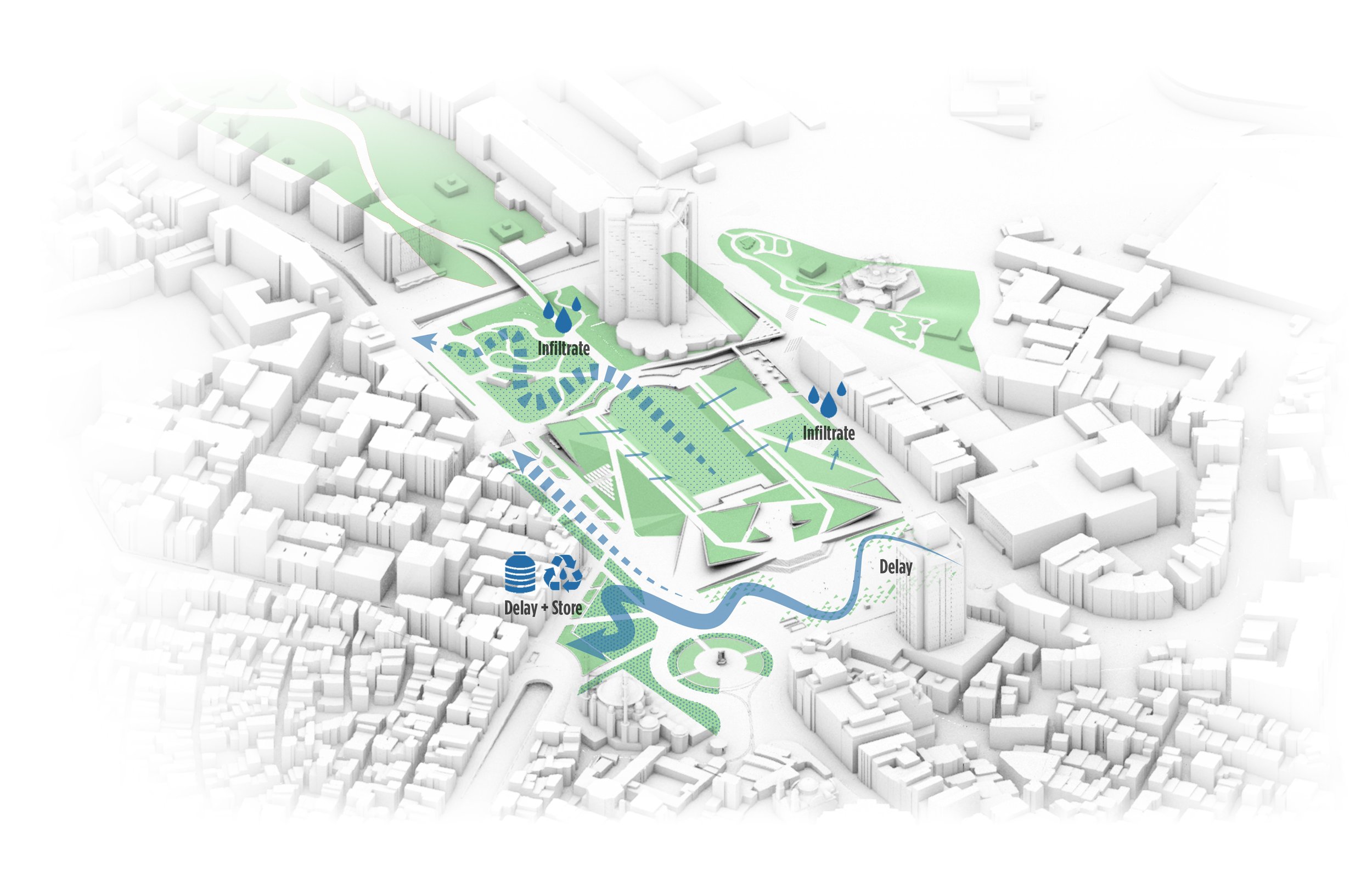ISTANBUL, TURKEY
Taksim Square
CLIENT Istanbul Metropolitan Municipality / SIZE 180,000 m², 44.5 acres / STATUS Competition finalist, 2020 / DESIGN TEAM Balmori Associates / SOUR
The importance of urban green in uniting people, place and memory.
Urban Commons designed by Balmori Associates in collaboration with SOUR, Cana Bilsel, and Sara Belge has been shortlisted among 20 finalists to design Taksim Square and Gezi Park in Istanbul, in an international urban design competition held by Istanbul Metropolitan Municipality via Istanbul Planning Agency (IPA). Our proposal for Istanbul’s most important public space envisions a square that brings people together and focuses on revitalizing the neglected historic site and the park through architectural interventions around Access, Action, and Arts.
Through access to its history and nature, improved mobility, and public space that is safe and friendly for all, Taksim Square and Gezi Park will become Istanbul’s urban commons, the green heart of the concrete city center.
Taksim Square and Gezi Park sit at the center of distinctive neighborhoods of creatives, makers, students, academics, entrepreneurs, and more. This introduces a unique urban moment to create a sense of place and strengthen the connection between people and the places they share.
Art is part of the site’s identity and is essential to position Taksim Square and Gezi Park as a lively, memorable and inspirational destination. Through the variety of proposed arts interventions the site becomes a stage for all.
The Museum of Urban Memory, designed around the symbolic trees of the Gezi Park, aims to further repair the disconnection between Taksim and its neglected history. Placed on the site of important past democratic manifestations such as the May Day gathering of 1977 and the Gezi manifestations of 2013, a new museum is proposed on the place where the citizens of Istanbul from various backgrounds claimed their “right on the decision making processes of the city they live”, where they aimed to protect the city’s environment for future generations. Therefore, a museum devoted to urban memory would be ideal for such a monumental location.

